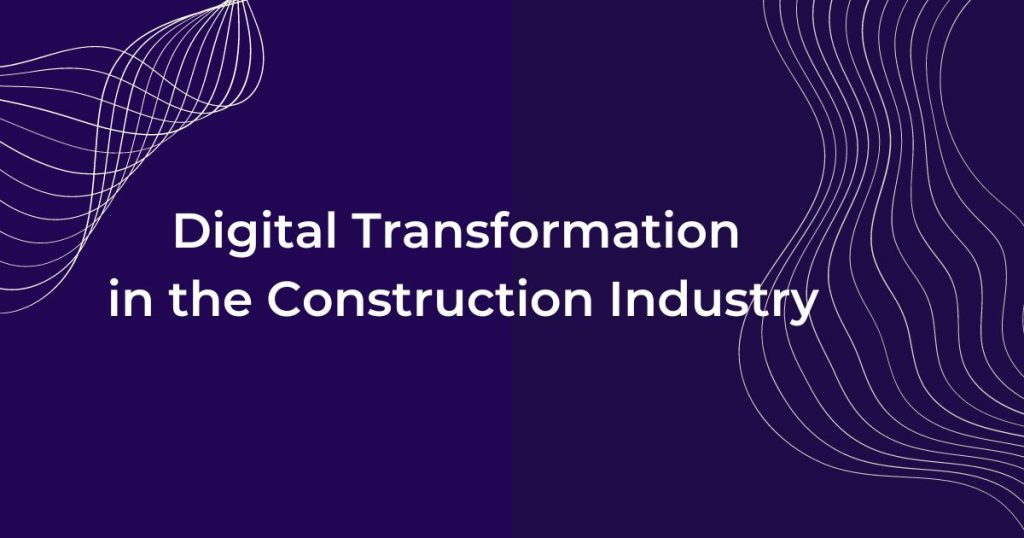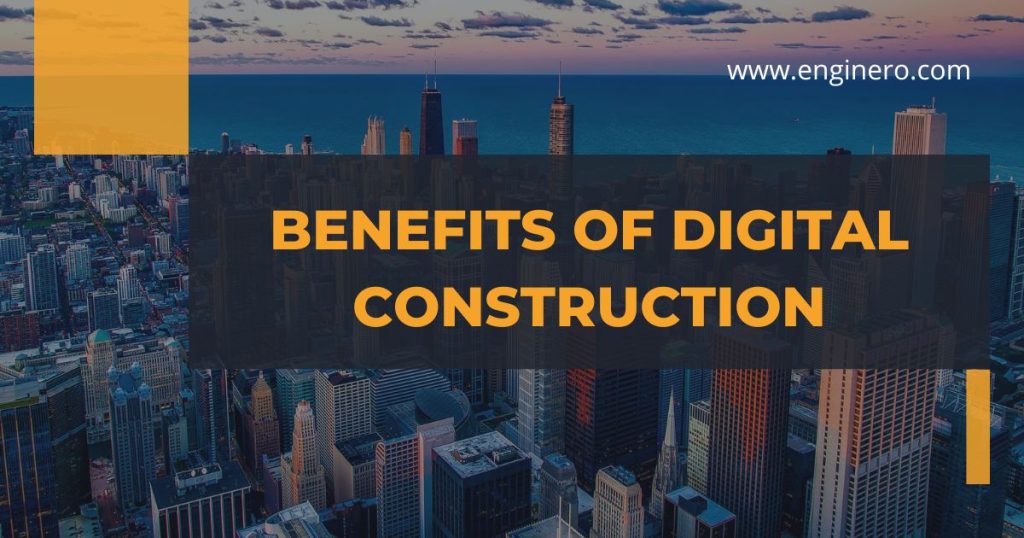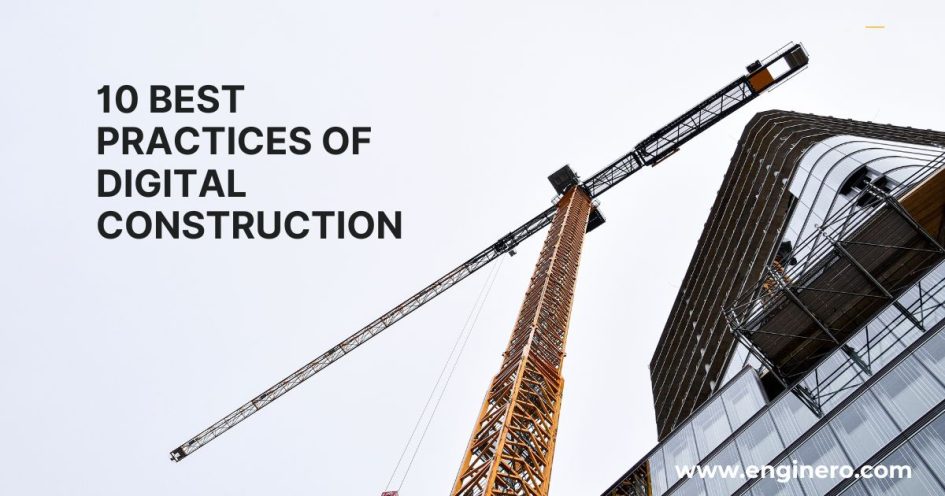In recent times, the construction sector has witnessed a notable shift towards digital integration, prioritizing precision and productivity in project execution while aligning with emerging trends.
Looking into the year 2024, the construction sector is evolving into a new path, with advanced technological developments and advancements in optimization.
This article will explore the basics of Digital Transformation in the Construction industry and the best 10 practices, as well as the various ways construction firms benefit from the transformation.
In this article, we ‘ll cover about,
Digital Transformation in Construction Industry

Digital Transformation in the Construction Industry involves revolutionizing traditional practices using advanced tools and techniques by changing all your workflows from paperwork to high-tech digital solutions like AI and Analytics.
This transformation ensures that every task moves accurately with enhanced speed, and collaborative work and to stay competitive in the market.
Through digital platforms, construction companies can boost productivity, expedite project delivery, and promote sustainable growth by utilizing data-driven insights, automating tedious procedures, and promoting cooperation.
Furthermore, digital transformation enables professionals in the construction industry to anticipate and adjust to changing market demands, guaranteeing their resilience and relevance in an increasingly digital environment.
Let’s have a look at the top 10 digital trends in the construction industry.
BIM
Building Information Modelling (BIM) stands out in the digital construction industry, by providing a comprehensive digital representation of the building’s physical and functional characteristics.
BIM enables architects, engineers, designers, and contractors to collaboratively develop construction projects in a unified environment, by facilitating informed decision-making and mitigating errors and reworks.
However, adaptation of BIM into construction projects improves efficiency, reduces unnecessary costs, and enhances quality.
AR and VR
AR technology creates an immersive experience by superimposing virtual components and building elements onto the physical environment. This can be used for various tasks, such as identifying clashes in the design, analyzing the placement of equipment and furniture, and visualizing the building’s interior and exterior.
On the other hand, VR technology provides an advanced 3D visualization experience that allows stakeholders to explore and interact with building designs virtually.
Also, VR technology helps train employees and avoid costly mistakes during construction by offering hands-on experience and valuable insights into the design.
3D Printing
Additive Manufacturing is the game-changing technology in digitalization. With 3D printing, you can create customized and complex parts and components from the digital design file.
Instead of using conventional techniques, 3D printing produces advanced and accurate components that are created at a fast and accurate pace.
This adoption enables faster delivery, reduces material waste, and improves the new possibilities for design and customization.
Robotics and Automation
Robots and automation technologies play a major role in transforming the construction industry by improving security, decreasing errors on building sites, and automating a variety of repetitive jobs.
Robots are being used more often on construction sites to carry out repetitive jobs more accurately and efficiently.
Furthermore, the construction sector is undergoing a tremendous transformation due to the integration of human capabilities with robots, or cobots. These collaborative robots minimize hazards, save labor costs, and improve precision.
AI Integration
AI is an emerging technology in the construction world. AI-driven solutions analyze enormous volumes of data to spot trends, forecast project results, and improve scheduling and resource allocation.
AI algorithms provide stakeholders the capacity to make data-driven decisions, reduce project delays and cost overruns, and enhance overall project performance and profitability.
These capabilities span from project risk assessment and cost estimation to supply chain management and quality control.
IoT Implementation
Internet of Things (IoT) implementation with the construction site revolutionizes the construction process by digitalizing your project assets with Internet technology. IoT devices like sensors, monitors, wearables, and cameras help the project stakeholders analyze the performance by collecting real-time data. It also ensures the safety of the workers by giving regular warnings and alerts while working in dangerous environments and with machinery.
Digital Twins
Digital twins are virtual replicas of the physical building and its assets. Digital twins continuously monitor the performance of the building by equipping various sensors and monitoring devices and collecting factors like humidity, energy consumed, air quality, and much more.
Digital twins perform analysis and predictions on the hazards and frequent maintenance. With these analytics, stakeholders can gain valuable data for identifying areas of improvement.
Construction Drones
Drones and unmanned aerial vehicles (UAVs) are pivotal in revolutionizing the construction sector with their versatile applications.
They provide stakeholders with high-resolution images and detailed data essential for site surveys, planning, and obstacle identification, thereby enhancing project efficiency and accuracy.
Furthermore, drones can be equipped with laser technology to perform scanning operations for effective surveying and detecting errors.
Cloud-based Common Data Environment
Common data platforms enable team members to coordinate, access, and share project-related files in a common environment. By implementing cloud technology, users can access the data from anywhere. Stakeholders can track each of the tasks for quicker decision-making.
Enginero provides a common data platform where project users can store all their project data like CAD files, reference documents, drawings, site images, and much more. Also, Enginero’s users can review all the CAD and BIM models within an interactive Model viewer.
Ultimately, the common data platform improves project outcomes, enhances accessibility, and facilitates efficient decision-making.
Prefabricated components
Prefabricated components or parts are manufactured outside the construction site. By defining clear scope and requirements, construction stakeholders seek customized parts for the materials they need.
Integrating prefabricated components with the actual building will leverage the project outcomes, reduce timelines, and improve project efficiency.
Prefabrication represents a digital trend reshaping construction, promising faster, greener, and safer building processes.
Benefits of Digital Construction

Digital construction brings you a lot of benefits in your projects. Each of these brings unique merits to your projects to be competitive, and sustainable in the market and the future. Some of the common benefits include,
Improved Project Efficiency
Implementing digital transformation into your construction methods optimizes processes, mitigates bottlenecks, and improves the workflow.
By automating the process, unnecessary delays are mitigated, accuracy is enhanced, and overall performance is optimized.
Enhanced Collaboration
With tools like BIM, coordination software, and enhanced visualization techniques like AR, and VR, project users can communicate effectively with their co-users. Also, it helps stakeholders make timely decisions for the project’s success.
Cost Savings
Digital transformation with the help of tools like 3D printing, BIM, and Digital Twins performance is monitored and by equipping automation the delays and wastes can be mitigated. Transforming into this will let the project stakeholders save a lot.
Improved Security and Quality
Digitally transforming your projects, improves accuracy and precision which in turn reduces rework and assures a better quality. Using IoT sensors and wearable devices, not only maintains the performance but also improves the safety of the workers by providing alerts.
Sustain with the Digital Disruption
In the ever-evolving industry of construction, the adoption of digital methods has become imperative for sustainability and dynamism. The integration of digital tools improves customer satisfaction and increases the client base.
To stay competitive in the market, construction firms must leverage these digital methods in their operations to optimize costs and enhance the customer experience.
Conclusion:
Digital transformation in the construction industry is driving innovations and efficiency. With innovative and advanced digital tools, the construction industry is evolving rapidly.
Every digital innovation, from prefabricated components to Building Information Modeling (BIM), offers distinct opportunities to improve productivity, teamwork, and project outcomes.
The adoption of virtual reality and augmented reality technologies helps stakeholders visualize designs and reduce errors, while robotics and additive manufacturing increase accuracy and streamline production processes.
In addition, the integration of artificial intelligence (AI), the Internet of Things (IoT), and shared data platforms transforms data-driven decision-making, improves project management skills, and guarantees seamless collaboration.

.png)
Leave a Reply